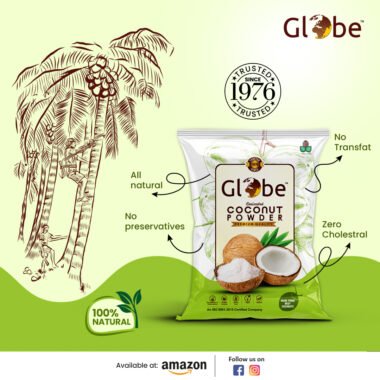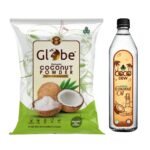Introduction to Desiccated Coconut Powder
Desiccated coconut powder is obtained by drying and grinding fresh coconut meat, resulting in a fine, white powder that retains the unique flavor and nutritional advantages of the coconut. Rich in essential nutrients, desiccated coconut is packed with dietary fiber, healthy fats, and several vitamins and minerals. It has become a staple in various culinary practices around the globe, particularly in Indian cuisine, where coconut holds significant cultural importance.
In Indian cooking, desiccated coconut powder is revered for its versatility. It can be incorporated into both sweet and savory dishes, enhancing flavor profiles while also contributing a delightful texture. In sweet dishes, desiccated coconut is often used in traditional desserts such as ladoos and barfis, where it adds a rich, nutty flavor. Its subtle sweetness complements the ingredients without overwhelming them, making it an essential component in many recipes.
On the savory side, desiccated coconut is routinely utilized in curries, chutneys, and gravies, enriching the dishes with a creamy texture and tropical essence. Each region of India incorporates coconut in its unique way; for instance, in Kerala, coconut is often ground into a paste to thicken curries, whereas in Maharashtra, it is frequently used in chutneys and salads. In the coastal states, like Goa and Tamil Nadu, you may find it as a staple in various seafood dishes.
Overall, desiccated coconut powder plays a critical role in enhancing flavors and providing nutritional benefits that are quintessential to Indian cuisine. As its popularity continues to grow, understanding its culinary applications and health values will allow home cooks to explore the rich cultural heritage of Indian cooking while enjoying its many advantages.
Sweet Indian Delights with Desiccated Coconut
Desiccated coconut has carved a niche in Indian cuisine, particularly in the realm of sweet delicacies. Its rich flavor and versatile texture make it a popular choice for various traditional sweets. Among the most cherished recipes are Coconut Ladoo, Coconut Barfi, and Coconut Pudding, which are often prepared during festivals and special occasions.
The Coconut Ladoo is a classic Indian sweet that embodies simplicity and taste. To prepare these delightful balls, one typically combines desiccated coconut with condensed milk and a hint of cardamom. The mixture is cooked until it thickens, then shaped into small round balls. These ladoos are often garnished with slivers of almonds or pistachios, making them visually appealing and adding an extra layer of texture.
Another beloved treat is Coconut Barfi, which showcases a slightly more elaborate technique. In this recipe, desiccated coconut is cooked with milk and sugar until it reaches a fudge-like consistency. Once cooled, the mixture is rolled out and cut into squares or diamonds. This sweet treat can be adorned with edible silver foil or colorful sprinkles, enhancing its festive appeal. Coconut Barfi is especially popular during Diwali and other celebrations, symbolizing prosperity and sweetness.
Coconut Pudding offers a modern twist on traditional sweets. This dessert is often prepared by blending desiccated coconut with milk, sugar, and agar-agar to achieve a silky, smooth texture. After refrigerating until set, the pudding can be topped with fresh fruits or a drizzle of honey, elevating its flavor profile. The light and refreshing taste of Coconut Pudding makes it suitable for a variety of occasions, appealing to both young and old alike.
Overall, each of these delightful recipes highlights the joy associated with preparing and sharing sweets made from desiccated coconut, bringing together family and friends in celebration of cherished traditions.
Savory Dishes Enhanced by Coconut Powder
Desiccated coconut powder is a versatile ingredient that enhances the flavor and texture of various savory dishes in Indian cuisine. One such dish is Coconut Chutney, a quintessential accompaniment that pairs perfectly with idli, dosa, or even as a dip for snacks. The addition of coconut powder provides a rich and creamy base, offering a delightful contrast to the spices and herbs. To prepare Coconut Chutney, blend together desiccated coconut, green chilies, ginger, and a handful of roasted lentils. Adjust the consistency with water and temper the mixture with mustard seeds and curry leaves, resulting in a vibrant, flavorful condiment.
Another classic dish that incorporates coconut powder is Coconut Curry. This dish varies by region, with each cuisine infusing unique spices and vegetables. In South Indian cuisine, for instance, a blend of coconut powder and spices like turmeric and coriander creates an aromatic base for a variety of curries. When cooking Coconut Curry, the desiccated coconut offers a natural sweetness, balancing the heat from chilies and the earthiness of other spices. Cooking method can vary; some prefer simmering the ingredients together to allow flavors to meld, while others may choose to add coconut powder at the end to maintain a fresh coconut taste.
Coconut Rice is yet another delightful dish that benefits from desiccated coconut, making it a simple yet satisfying meal. To prepare Coconut Rice, cook basmati rice and then mix in toasted desiccated coconut, which adds a pleasant chewiness and nutty flavor. Enhance the dish with sautéed onions, mustard seeds, and curry leaves for a delicious twist. Whether served plain or accompanied by a side of vegetable curry, Coconut Rice showcases how coconut powder can elevate the overall culinary experience.
Cooking with desiccated coconut powder not only enhances the sensory appeal of savory dishes but also provides opportunities for culinary creativity. Experimenting with regional variations of these recipes can lead to exciting and unique flavor combinations, thus unlocking the full potential of this remarkable ingredient.
Tips and Tricks for Cooking with Desiccated Coconut
Desiccated coconut powder is a versatile ingredient that can elevate a wide array of culinary creations. To ensure optimal use, it is essential to understand how to select, store, and incorporate this ingredient into your dishes effectively. When purchasing desiccated coconut, look for brands that offer finely shredded coconut with a light color and fresh aroma. Avoid options that appear yellowed or have a stale scent, as these may indicate age or poor quality.
Storage is critical to maintaining the freshness of your desiccated coconut. It is best kept in an airtight container to shield it from moisture and contaminants. A cool, dark place, such as a pantry or cupboard, is ideal for storage. If you live in a humid climate, consider refrigerating or freezing the coconut powder to prolong its shelf life. Properly stored, desiccated coconut can last up to a year, ensuring you always have this ingredient on hand for your favorite recipes.
When using desiccated coconut in cooking, it is wise to consider the moisture content of your recipe. If the powder seems particularly dry, rehydrating it can enhance its texture and flavor. Simply soak the desired amount in warm water or milk for about 15 to 30 minutes, then drain. This technique can be particularly useful in baking or when making curries, where more moisture can lead to a richer result.
Incorporating desiccated coconut into everyday meals can be achieved creatively. Consider mixing it into smoothies for added nutrition or using it as a crunchy topping for yogurt or oatmeal. However, common mistakes include neglecting to adjust liquid ratios when adding coconut to recipes or using stale coconut, both of which can compromise the final dish. When used thoughtfully with complementary ingredients such as tropical fruits, nuts, and spices, desiccated coconut can significantly enhance flavor profiles, bringing a unique and delightful character to your meals.





